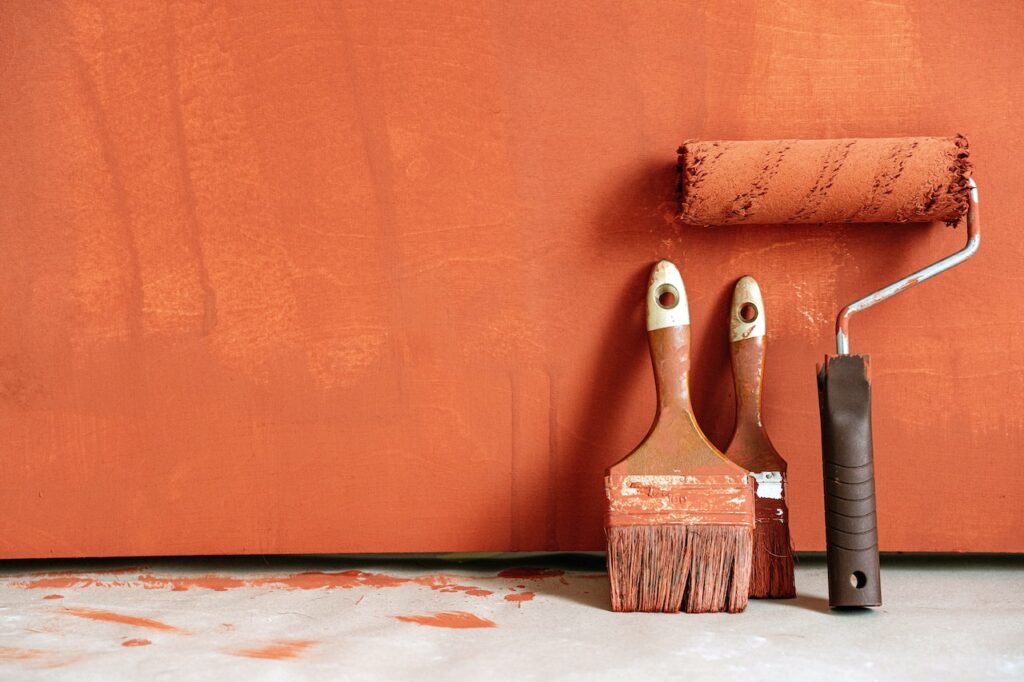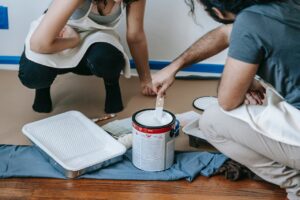Table of Contents
ToggleIntroduction: The Importance of Eco-Friendly Paint for Interior Painting
Eco-friendly or “green” painting is becoming increasingly popular for a good reason. Conventional paints are known to contain harmful chemicals, such as volatile organic compounds (VOCs), that can have adverse health effects on people, pets, and the environment. These chemicals can emit harmful fumes long after the paint has dried, which can lead to poor indoor air quality, respiratory problems, and other health issues.
Fortunately, eco-friendly paints offer a safer and healthier alternative for interior painting. They are made with natural ingredients, such as plant oils and natural pigments, and do not contain harmful chemicals like VOCs. In this article, we will discuss the five key benefits of using eco-friendly paint for your interior painting project.
Benefit #1: Healthier Indoor Air Quality
The first and most important benefit of using eco-friendly paint for interior painting is that it helps improve indoor air quality. As mentioned earlier, conventional paints contain harmful chemicals, such as VOCs, which can emit toxic fumes that pollute the air and cause a range of health problems. These fumes can linger in the air for days or even weeks after painting, posing a significant health risk. Eco-friendly paints, on the other hand, are made with natural ingredients that are non-toxic and emit little to no harmful fumes. They are free from the harmful chemicals that are present in conventional paints, making them a safer and healthier option for indoor painting. By using eco-friendly paint, you can breathe easy knowing that your indoor air quality is not being compromised.
Benefit #2: Lower Environmental Impact
The second benefit of using eco-friendly paint for interior painting is that it has a lower environmental impact than conventional paint. Conventional paints contain harmful chemicals that are released into the environment during manufacturing, application, and disposal. These chemicals can contaminate the air, water, and soil, contributing to environmental degradation and health problems.
Eco-friendly paints, on the other hand, are made with natural ingredients that are renewable and sustainable. They are free from harmful chemicals, making them less harmful to the environment. Additionally, they are often packaged in recycled materials, which further reduces their environmental impact. By using eco-friendly paint, you can reduce your carbon footprint and contribute to a more sustainable future.
Benefit #3: Safer for Children and Pets
The third benefit of using eco-friendly paint for interior painting is that it is safer for children and pets. Traditional paints contain volatile organic compounds (VOCs), which are chemicals that can be harmful to human health. When these paints are applied, VOCs are released into the air and can linger for weeks or even months, exposing residents to potentially harmful toxins.
Eco-friendly paints, on the other hand, are made with natural, non-toxic ingredients that are safe for both humans and animals. They have low or no VOCs, which means they emit fewer harmful fumes during and after application. This makes them an ideal choice for families with young children and pets who are more vulnerable to the negative effects of traditional paints. By using eco-friendly paint, you can create a safer, healthier living environment for your loved ones and pets while still achieving beautiful, long-lasting results.
Benefit #4: Better for the Long-Term Health of Your Home
The fourth benefit of using eco-friendly paint for interior painting is that it is better for the long-term health of your home. Traditional paints contain chemicals that can break down over time and cause damage to the surfaces they are applied to. This can lead to peeling, cracking, and fading, which can ultimately compromise the structural integrity of your home.
Eco-friendly paints, on the other hand, are made with natural ingredients that are gentle on surfaces and do not cause damage over time. They are also formulated to resist fading, chalking, and yellowing, which means they will maintain their color and appearance for longer periods of time. This not only makes your home look better, but it also reduces the need for frequent repainting, saving you time and money in the long run.
Benefit #5: Comparable Performance and Quality
Eco-friendly paints are no longer inferior in terms of quality and performance compared to traditional paints. In fact, they have come a long way in terms of durability, coverage, and finish. Some eco-friendly paints are even designed to be more durable than their traditional counterparts. This means that by using eco-friendly paint, you can still achieve the same high-quality finish and long-lasting results without compromising on environmental and health benefits. Plus, eco-friendly paint comes in a wide variety of colors and finishes, giving you plenty of options to choose from to match your desired aesthetic.
Conclusion: Why You Should Consider Eco-Friendly Paint for Your Next Interior Painting Project
Choosing eco-friendly paint for your next interior painting project is a smart choice for a variety of reasons. Not only is it better for your health and the environment, but it also offers comparable performance and quality to traditional paint. With benefits such as healthier indoor air quality, lower environmental impact, safety for children and pets, and better long-term health for your home, there are plenty of reasons to consider making the switch to eco-friendly paint. Plus, with the wide variety of colors and finishes available, you can achieve your desired aesthetic without sacrificing on your values. So, whether you’re renovating your home or just looking for a fresh coat of paint, consider using eco-friendly paint to make a positive impact on both your health and the planet.
Our Experts’ Take
Many experts in the painting industry agree that using eco-friendly paint has numerous benefits, not only for the environment but also for human health. They emphasize the importance of using low or zero VOC (volatile organic compound) paints, which emit fewer harmful chemicals, reducing indoor air pollution and improving air quality. Experts also agree that eco-friendly paints can perform as well as traditional paints and offer similar quality and durability, dispelling the myth that using eco-friendly options means sacrificing performance.
Additionally, they highlight the long-term benefits of using eco-friendly paint, such as reduced environmental impact, healthier living environments, and better protection of the property’s long-term health. Overall, experts emphasize that the benefits of using eco-friendly paint far outweigh the costs and recommend that homeowners and businesses consider using these products for their interior painting projects.
Source: Blakeney Leigh | The House Designers | Treatex | Sagacious IP
Do You Need A Professional Interior Painting Team You Can Trust?
Looking to give your space a fresh new look? Say goodbye to boring walls and hello to the experts at PaintMasters – your go-to interior painter in Concord, California! With over 25 years of experience in the business, we’ve perfected the art of transforming any space into a work of art.
From custom home interiors to commercial office spaces and restaurants, our team of skilled professionals has the knowledge and expertise to tackle any project with ease. We’re not your average interior painter – we use the latest cutting-edge technology and a state-of-the-art 15,000 CFM spray booth to ensure that every detail is absolutely perfect.
Whether you’re looking for interior or exterior painting, deck staining, acoustic removal, drywall repair, or texturing, we’ve got you covered. At PaintMasters, we’re committed to using only the highest quality materials and providing unbeatable quality workmanship on every job.
So why should you choose us for your next project? It’s simple – we’re passionate about what we do and committed to delivering a flawless finish every single time. Whether you’re looking to revamp a tired old room or add a unique touch of style to a brand new space, we’re here to help you achieve your vision.
Don’t settle for anything less than the best. Trust the experts at PaintMasters to transform your home or business into the space of your dreams. Contact us today to get started on your next interior painting project!


